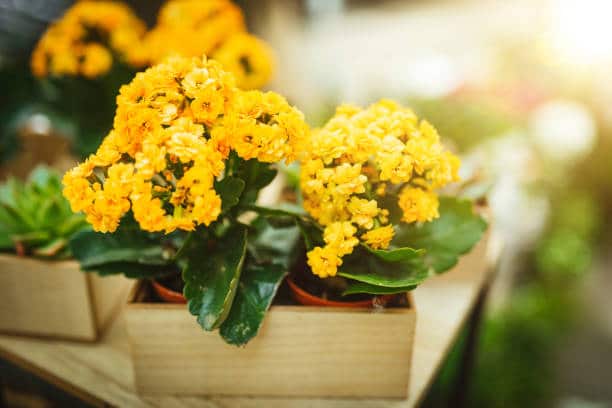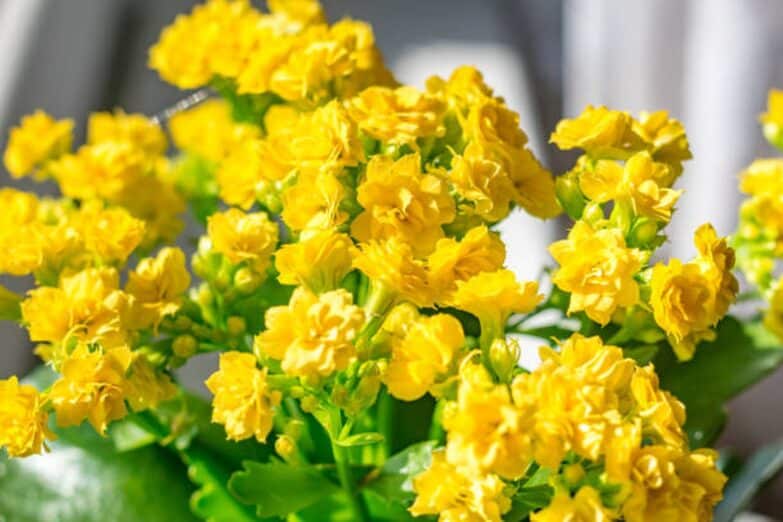Calandiva, known for its vibrant colors and stunning flower displays, has become a popular choice for both indoor and outdoor gardens. This dazzling succulent, a cultivar of the Kalanchoe blossfeldiana, adds a burst of color and life to any space, and is relatively low maintenance, making it an excellent option for novice and experienced gardeners alike. In this comprehensive guide, we will unlock the secrets of the Calandiva plant, exploring its origin, characteristics, and the best practices for growing and caring for these captivating succulents.
The Origins and Characteristics of the Calandiva Plant
A Colorful History
The Calandiva plant, scientifically known as Kalanchoe blossfeldiana ‘Calandiva’, is a cultivar of the Kalanchoe blossfeldiana species, which is native to Madagascar. The original Kalanchoe blossfeldiana, with its vibrant and long-lasting flowers, gained popularity in the gardening world for its beauty and ease of care. The Calandiva cultivar was developed in the early 2000s by Dutch breeders, who introduced the plant’s unique double flowers and expanded color range, making it even more desirable for garden enthusiasts.
Striking Features
Calandiva plants boast several distinctive features that make them a standout choice for gardeners. Some of the most notable characteristics include:
- Double Flowers: Unlike the single flowers of the original Kalanchoe blossfeldiana, Calandiva plants are known for their striking double flowers that resemble small roses. These dense blooms create a fuller, more lush appearance.
- Vibrant Colors: Calandiva flowers come in a wide range of vivid colors, including red, pink, orange, yellow, and white. This rich palette allows gardeners to create eye-catching color combinations and displays.
- Compact Size: Calandiva plants typically grow to a compact size of 6 to 12 inches tall and wide, making them ideal for small spaces, indoor gardens, and container plantings.
- Succulent Foliage: Calandiva plants feature fleshy, dark green leaves that store water, allowing the plant to withstand periods of drought and thrive in low-water environments.
Growing and Caring for Calandiva Plants
Light Requirements
Calandiva plants thrive in bright, indirect light, making them well-suited for sunny windowsills, porches, or patios. While they can tolerate direct sunlight for a few hours each day, prolonged exposure to intense sun can cause the leaves to scorch or the vibrant flower colors to fade. If you notice signs of sunburn or faded blooms, consider relocating your plant to a shadier spot or providing some form of shade during peak sunlight hours.
Temperature and Humidity
These colorful succulents prefer moderate temperatures, ideally between 60 to 75 degrees Fahrenheit (16 to 24 degrees Celsius). Calandiva plants can tolerate short periods of cooler temperatures, but prolonged exposure to temperatures below 50 degrees Fahrenheit (10 degrees Celsius) can cause stress and damage to the plant. When grown indoors, placing the plant near a drafty window or air vent can also cause stress, so be mindful of your Calandiva’s location.
As for humidity, Calandiva plants are relatively adaptable and can tolerate average indoor humidity levels. However, they can be sensitive to high humidity, which can lead to rot or fungal issues. Ensure proper air circulation around the plant to help prevent such problems.
Watering and Fertilizing
Calandiva plants, like most succulents, require a well-draining soil to prevent root rot and other water-related issues. When watering your Calandiva, it is essential to follow the “soak and dry” method, allowing the soil to dry out completely between waterings. Overwatering can lead to root rot and other problems, so be cautious not to water too frequently. In general, watering once every two to three weeks should suffice, but you may need to adjust the frequency based on your specific environment and the season.
Fertilizing your Calandiva plant can help promote healthy growth and encourage a more prolific flowering display. Use a balanced, water-soluble fertilizer diluted to half strength, and apply it once a month during the growing season (spring and summer). Avoid fertilizing during the plant’s dormant period (fall and winter), as this can lead to leggy growth and reduced flowering.
Pruning and Propagation
Pruning your Calandiva plant can help maintain its shape, encourage bushier growth, and remove spent flowers to make way for new blooms. After the flowering period, use clean, sharp scissors or pruning shears to trim back the stems to the desired length, being careful not to damage the plant’s main structure.
Propagation of Calandiva plants is relatively straightforward and can be achieved through leaf or stem cuttings. To propagate, carefully remove a healthy leaf or stem segment from the parent plant, allow it to dry for a day or two to form a callus, and then place it on well-draining soil. Keep the soil slightly moist, and in a few weeks, the cutting should begin to root and produce new growth.
Common Pests and Diseases
Pest Prevention and Control
Like many indoor and outdoor plants, Calandiva plants can be susceptible to common pests, such as mealybugs, aphids, and spider mites. To prevent infestations, regularly inspect your plant for signs of pests, and maintain proper watering and environmental conditions to keep the plant healthy and less vulnerable to attacks.
If you do notice pests on your Calandiva plant, consider using non-toxic methods to control the infestation, such as washing the plant with a gentle stream of water, wiping the leaves and stems with a damp cloth, or applying insecticidal soap or neem oil, following the manufacturer’s instructions.
Disease Prevention and Treatment
The most common diseases affecting Calandiva plants are related to overwatering or high humidity, leading to root rot or fungal infections. To prevent these issues, ensure that your plant is potted in well-draining soil, watered appropriately, and provided with adequate air circulation.
If you suspect your Calandiva plant is suffering from a disease, it is crucial to act quickly to prevent further damage. Remove any affected leaves or stems, adjust your watering practices, and consider repotting the plant in fresh, well-draining soil. If the problem persists, consult with a local gardening expert or nursery for guidance on the appropriate treatment.
Decorating with Calandiva Plants

Indoor Displays
Calandiva plants make stunning additions to indoor spaces, thanks to their vibrant colors and compact size. Place them on windowsills, desks, or shelves where they can receive ample sunlight and brighten up the room. You can also create eye-catching arrangements by pairing Calandivas with other succulents or houseplants in complementary colors and textures.
Outdoor Plantings
In milder climates, Calandiva plants can be used to add a burst of color to outdoor gardens, patios, and balconies. Plant them in well-draining containers or garden beds, ensuring they receive the appropriate amount of sunlight. Calandivas can be incorporated into mixed succulent plantings or used as border plants to create a vibrant, low-maintenance display.
Special Occasions and Gifts
With their long-lasting blooms and striking colors, Calandiva plants make excellent gifts for special occasions, such as birthdays, anniversaries, or housewarmings. They can also be used as unique centerpieces or decorations for events like weddings and parties, bringing a touch of natural beauty to any celebration.
Conclusion
The dazzling Calandiva plant offers gardeners a low-maintenance, vibrant, and versatile option for both indoor and outdoor spaces. By understanding the plant’s origins, characteristics, and care requirements, you can successfully grow and enjoy these captivating succulents in your home or garden. So, embark on your colorful journey with Calandiva plants and unlock the secrets of these dazzling beauties, bringing life and color to any space they inhabit.

